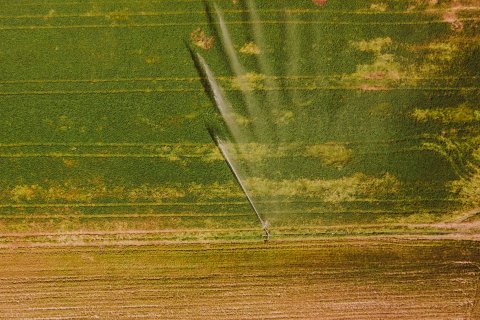Dealing with droughts in the Rhine Delta
Preliminary results of study and workshop

Droughts in the Netherlands
Freshwater availability in the 200.000 km2 Rhine basin is expected to be hampered by climate change-induced modification in its rainfall-snowmelt-driven flow regime. The last three years have been reported as very dry. Dealing with these droughts is a challenging governance issue for the simple reason that it involves multiple actors that represent different interests. Scarcity will make it hard to meet all freshwater demands. Dealing with droughts is also a multi-level and trans-boundary governance challenge since physical delta and basin boundaries and administrative borders do not coincide. As a result, water availability issues and required strategies must be addressed at multiple levels of decision-making (ranging from the local to the – international – catchment level and beyond).
Strategies to deal with droughts
In dealing with droughts, actors in the delta may select some or combinations of the following strategies:
- Prioritization of particular water functions (drinking water, process water, irrigation, navigation, hydropower, nature, peat dike protection, and the prevention of saltwater intrusion) over others;
- Reduction of freshwater demands by introducing water-saving technologies (including water reuse), land-use changes, the introduction of more drought-resistant or salt-tolerant crops, and/or by organizing water savings campaigns;
- Buffering of fresh water in lakes, canals, or floodplains, by managed aquifer recharge, re-meandering of modified brooks, rising groundwater tables, or by the construction of smaller-scale storage facilities in the built environment (rainwater harvesting);
- Guaranteeing minimum river flows by concluding agreements with upstream countries (International basin strategies);
- Compensation and recovery of residual risks by private or public insurance systems.

Implementation of the strategies and challenges
The implementation of (combinations of) these strategies is not easy as they might put restrictions on existing property rights and are often effective on different temporal and regional scales. The choice for one or more of the above-mentioned options will be highly context-dependent. Both physical and socio-economic factors will be of influence. Ideally, choices made are rational which means that they are based on a sound geophysical knowledge base (including short and long term water availability scenarios) and transparent societal cost-benefits analyses. On top of that, their implementation should be facilitated by a fair legal regime (including regulating, distribution, and compensation schemes) and through a smooth functioning governance system, that ideally covers a basin as a whole.
In the Seed Money Project Dealing with Droughts in Deltas, Carel Dieperink, Annisa Triyanti, Lotte van Helden and Charlotte Stijnen of the Copernicus Institute of Sustainable Development have explored the experiences in the Netherlands of the implementation of the five strategies. This Seed Money project is funded by the Water Climate and Future Deltas Hub of Pathways to Sustainability Program. The preliminary findings of the project were discussed on 14 December 2020 during an online workshop. The workshop successfully gathered multidisciplinary (law, governance, hydrology) insights of experts of Utrecht University, the National Public Works Department (Rijkswaterstaat), Deltares and the Association of Dutch Provinces (IPO).
Preliminary results of the expert workshop
During the workshop, the strengths and weaknesses of different drought strategies were discussed. It became clear that the Netherlands is much more advanced in the field of flood prevention and that concerning drought management, the country could learn from the way other countries have implemented strategies for preventing droughts and addressing drought crises. Next, drought is a hot topic now, since the Netherlands have experienced three consecutive dry summers. However, there is a danger that the attention of scientists and policymakers will shift away if next years will be more wet.
Third, there is a need to explore the possibilities of implementing real-time groundwater monitoring and communicating these results to the general public. Seasonal forecasts, as studied by Niko Wanders, could also be very helpful in dealing with droughts. The role of good communication of forecasts and monitoring results in awareness raising of farmers and the general public was stressed. Fourth, we need a better understanding of the 'value' of damage caused by droughts, especially to enable a better trade-off between the interests of different societal sectors (e.g. nature, shipping, and agriculture sectors). It was found that the monetizing of damage caused to nature was particularly challenging. Finally, during the workshop participants discussed existing knowledge gaps related to drought issues. These gaps will be addressed in a final report which will be shared upon completion of the project.

